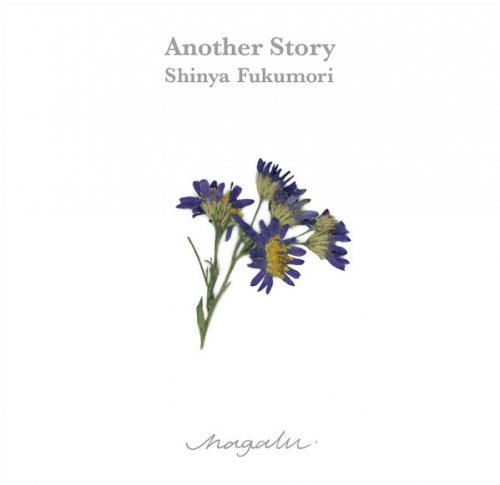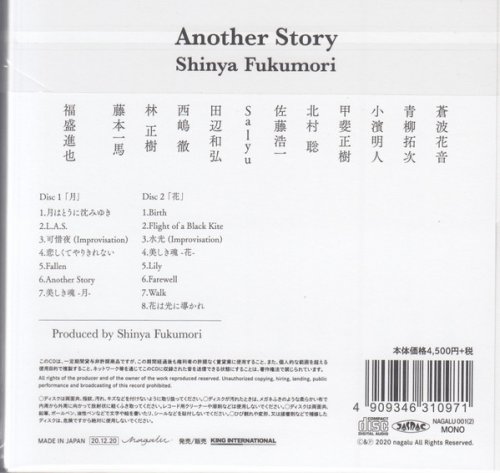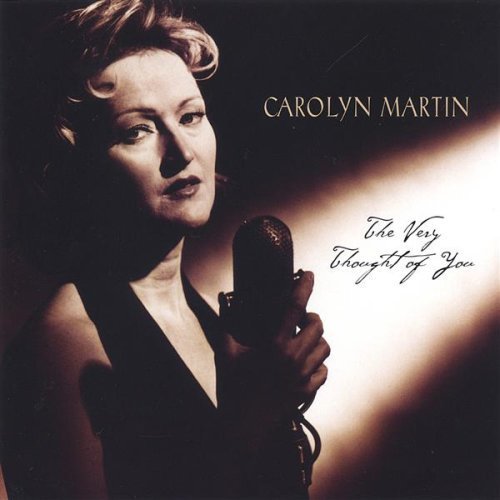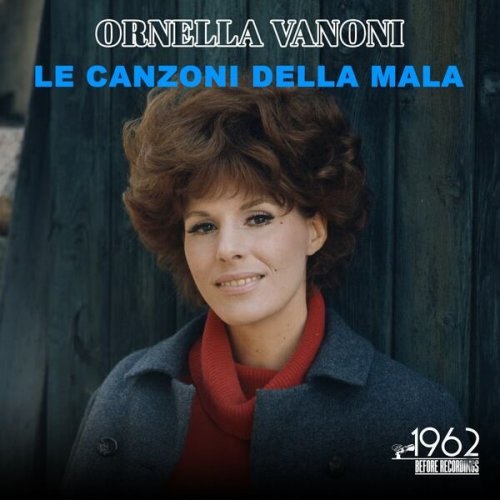Shinya Fukumori - Another Story (2020)

Artist: Shinya Fukumori
Title: Another Story
Year Of Release: 2020
Label: Nagalu
Genre: Jazz, Modern Creative
Quality: FLAC (tracks+.cue,log,scans)
Total Time: 01:23:53
Total Size: 279 MB
WebSite: Album Preview
Tracklist:Title: Another Story
Year Of Release: 2020
Label: Nagalu
Genre: Jazz, Modern Creative
Quality: FLAC (tracks+.cue,log,scans)
Total Time: 01:23:53
Total Size: 279 MB
WebSite: Album Preview
CD1 - Tsuki {00:44:27}
01. Tsuki wa Tou ni Shizumi Yuki (Fukumori) - 6:20
02. L.A.S. (Fukumori) - 14:40
03. Atarayo (Improvisation) (Fukumori) - 3:20
04. Kanashikute Yarikirenai (Kato-Sato) - 5:33
05. Fallen (Fukumori) - 4:02
06. Another Story (Fukumori) - 6:08
07. Utsukushiki Tamashii (Tsuki) (Fukumori) - 4:24
CD2 - Hana {00:39:26}
01. Birth (Fukumori) - 5:28
02. Flight of a Black Kite (Fukumori) - 8:03
03. Mihikari (Improvisation) (Fukumori-Salyu) - 3:18
04. Utsukushiki Tamashii (Hana) (Fukumori) - 4:25
05. Lily (Fukumori) - 5:55
06. Farewell (Fukumori) - 4:00
07. Walk (Fukumori-Nilo) - 6:30
08. Hana wa Hikari ni Michibikare (Fukumori) - 1:47
When joining the ranks of ECM as a drummer, you can be sure to be subject of comparisons to the many drum legends who have extensive recording histories with the label— late veterans Paul Motian or Jon Christensen. Much like the two multiple-eras-defining pioneers, Japanese drummer Shinya Fukumori's approach to the role of his instrument, as presented on his debut for the label, For 2 Akis (2018), builds on a cymbal-heavy language that sees him interacting with his sidemen on a melodic level as much as on a rhythmic one. In further consistency with much of Motian's work, Fukumori's vehicle on his debut album is a bass-less trio, leaving him to create the deep frequency cues in interplay with German pianist Walter Lang and French saxophonist Matthieu Bordenave. But Fukumori's ambition doesn't end there. In order to let his imagination and aspirations roam completely free, the drummer has created his own label, Nagalu, whose inception is memorialized with the release of his resourceful sophomore album Another Story. Spread over two discs, carrying the titles "Tsuki" (Moon) and "Hana" (Flower) respectively, the album sees Fukumori joined by a variety of Japanese talents, who add texture, color and depth to an atmospheric universe of sound, deeply rooted in Japanese melodicism and western harmony alike.
Slow piano cadences interrupted by sparse cymbal bangs and ruminating bass arco give way to subtle bandoneon lines on the opening sequence to Another Story. By the carefully unfolding dynamics presented over the piece's approximately six-minute time span, it's easy to tell the kind of journey the listener has just committed to. Patience and calm are both the emanating forces and the sources of the music found on an album that unfolds like a lazy Sunday morning in the haze. The harmonic pace continues to progress in slow-motion throughout the session and allows the musicians to dwell on the different sonorities of their respective instruments for as long as it takes. Each voice here has its own idea of how to fill the large amount of space with as much substance as possible, all the while relying on restraint as the main stylistic tool.
Fukumori, the architect of the proceedings, too, has his own very specific ideas in regard to the sonic concept that envelopes "Moon" and "Flower"—a concept that sets the sonic aura of the double album apart from most contemporary recordings. Since birth, the drummer could only ever hear with one ear. Therefore, stereo imaging is lost on him—that being an implication of a bulk of recordings since the 60s and in jazz even before. In order to give his audience an idea of what his world of sound feels like, Another Story is mixed, mastered and released in mono only. Where a sense of width towards the outer edges of the spectrum might appear missing, there lies plenty of spatial and compositional depth to make up for it. After all, even the Beatles' albums were originally mixed in mono and according to George Harrison and George Martin, among others, it's the format in which they sound best.
"Kanashikute Yarikirenai" is the only cut from the album that wasn't penned by Fukumori himself. A traditional Japanese folk song that he spent his childhood listening to, the song's lullaby-like melodicism proves to be an influential character trait that accompanies most of the drummer's own writing. But where it remained vague and instrumental on his debut album, here Fukumori invites guest singers Salyu and Takuji Aoyagi to turn the melodic meditations into narrated tales, whose instrumental gestures match the phonetics of their vocals.
Salyu is the author of the prominent female voice on the more experimental bits of Another Story. Less monotonous than in Japanese Kabuki theater, but in a spontaneous contrast to the conventions of a classically trained singer, her bending lines are reminiscent of a joik chant—the yodel-like singing style found in traditional Sami music, in Europe's northern latitudes. Stretching to emotive heights and substantial volume, her voice represents the leading figure on the four songs to which she contributes: "Atarayo," "Utsukushiki," Tamashii-Tsuki" and "Mihikari" & "Utsukushiki Tamashii-Hana," two of which are improvisations. Molding vocalizations unbound to actual words, her soprano reaches for spheres above and finds a counteracting force in Fukumori, boast boisterous percussion balances teamed with her shrill and volatile expressionism.
Like poetically cut scenes from a slow-paced movie—maybe born on the brink of color television—Fukumori's story unfolds gently and with the kind of nuances that only repeated spins can reveal. The cinematic notion is introduced by the conversational interplay between the drummer and his various musical partners throughout the album. Continuing the comparative notion of a motion picture, their interactions can take form as montages, connecting different sequences of a story in a nostalgic retrospection that defies typical song structures and also progresses and evolves naturally with the passing of time. "Fallen," "Lily," "Farewell" and the title track are highlights that reflect this impression and see the combination of chordal piano cadencing (piano duties being shared between the two pianists Masaki hayashi and Koichi Sato throughout the album) to dynamic percussion laying out scenes for saxophone, flute (a traditional Japanese bamboo flute called shakuhachi) and bandoneon to direct.
Before the dreamy piano arpeggios of "Hana Wa Hikari Ni Michibikare" prolong the farewell in the way an epilogue would, "Walk" acts as the actual closer, summoning the imagined credits. According to Fukumori, the song "represents a particular sound [he] has been envisioned since [he] was eighteen; an empathic integration of Westernized jazz and poetic sceneries unique to [his] native country." His words best describe the carefree melody which guitarist Takuji Aoyagi unforcedly sings to a slightly wistful backdrop of bandoneon breeze and double bass pops—easily imaginable as the score to a slightly regret-filled but still hopeful scene of any good movie. Another Story is a unique and elaborate document of Shinya Fukumori's very personal musical journey. His diligence imbues the project in every step of the way—from the neatly detailed packaging of the two CDs to the seemingly infinite depth of their contents.
Slow piano cadences interrupted by sparse cymbal bangs and ruminating bass arco give way to subtle bandoneon lines on the opening sequence to Another Story. By the carefully unfolding dynamics presented over the piece's approximately six-minute time span, it's easy to tell the kind of journey the listener has just committed to. Patience and calm are both the emanating forces and the sources of the music found on an album that unfolds like a lazy Sunday morning in the haze. The harmonic pace continues to progress in slow-motion throughout the session and allows the musicians to dwell on the different sonorities of their respective instruments for as long as it takes. Each voice here has its own idea of how to fill the large amount of space with as much substance as possible, all the while relying on restraint as the main stylistic tool.
Fukumori, the architect of the proceedings, too, has his own very specific ideas in regard to the sonic concept that envelopes "Moon" and "Flower"—a concept that sets the sonic aura of the double album apart from most contemporary recordings. Since birth, the drummer could only ever hear with one ear. Therefore, stereo imaging is lost on him—that being an implication of a bulk of recordings since the 60s and in jazz even before. In order to give his audience an idea of what his world of sound feels like, Another Story is mixed, mastered and released in mono only. Where a sense of width towards the outer edges of the spectrum might appear missing, there lies plenty of spatial and compositional depth to make up for it. After all, even the Beatles' albums were originally mixed in mono and according to George Harrison and George Martin, among others, it's the format in which they sound best.
"Kanashikute Yarikirenai" is the only cut from the album that wasn't penned by Fukumori himself. A traditional Japanese folk song that he spent his childhood listening to, the song's lullaby-like melodicism proves to be an influential character trait that accompanies most of the drummer's own writing. But where it remained vague and instrumental on his debut album, here Fukumori invites guest singers Salyu and Takuji Aoyagi to turn the melodic meditations into narrated tales, whose instrumental gestures match the phonetics of their vocals.
Salyu is the author of the prominent female voice on the more experimental bits of Another Story. Less monotonous than in Japanese Kabuki theater, but in a spontaneous contrast to the conventions of a classically trained singer, her bending lines are reminiscent of a joik chant—the yodel-like singing style found in traditional Sami music, in Europe's northern latitudes. Stretching to emotive heights and substantial volume, her voice represents the leading figure on the four songs to which she contributes: "Atarayo," "Utsukushiki," Tamashii-Tsuki" and "Mihikari" & "Utsukushiki Tamashii-Hana," two of which are improvisations. Molding vocalizations unbound to actual words, her soprano reaches for spheres above and finds a counteracting force in Fukumori, boast boisterous percussion balances teamed with her shrill and volatile expressionism.
Like poetically cut scenes from a slow-paced movie—maybe born on the brink of color television—Fukumori's story unfolds gently and with the kind of nuances that only repeated spins can reveal. The cinematic notion is introduced by the conversational interplay between the drummer and his various musical partners throughout the album. Continuing the comparative notion of a motion picture, their interactions can take form as montages, connecting different sequences of a story in a nostalgic retrospection that defies typical song structures and also progresses and evolves naturally with the passing of time. "Fallen," "Lily," "Farewell" and the title track are highlights that reflect this impression and see the combination of chordal piano cadencing (piano duties being shared between the two pianists Masaki hayashi and Koichi Sato throughout the album) to dynamic percussion laying out scenes for saxophone, flute (a traditional Japanese bamboo flute called shakuhachi) and bandoneon to direct.
Before the dreamy piano arpeggios of "Hana Wa Hikari Ni Michibikare" prolong the farewell in the way an epilogue would, "Walk" acts as the actual closer, summoning the imagined credits. According to Fukumori, the song "represents a particular sound [he] has been envisioned since [he] was eighteen; an empathic integration of Westernized jazz and poetic sceneries unique to [his] native country." His words best describe the carefree melody which guitarist Takuji Aoyagi unforcedly sings to a slightly wistful backdrop of bandoneon breeze and double bass pops—easily imaginable as the score to a slightly regret-filled but still hopeful scene of any good movie. Another Story is a unique and elaborate document of Shinya Fukumori's very personal musical journey. His diligence imbues the project in every step of the way—from the neatly detailed packaging of the two CDs to the seemingly infinite depth of their contents.

![Juan Torres Fernández - Azul Cristalino (2025) [Hi-Res] Juan Torres Fernández - Azul Cristalino (2025) [Hi-Res]](https://www.dibpic.com/uploads/posts/2025-12/1765496468_y7dxox9hmk6hb_600.jpg)

![Sam Most - But Beautiful (2025) [Hi-Res] Sam Most - But Beautiful (2025) [Hi-Res]](https://img.israbox.com/img/2025-12/12/n19esmi2zxvr716zw8citn0dv.jpg)





![Kenny Wheeler, Keith Jarrett, Dave Holland & Jack DeJohnette - Gnu High (1976/2025) [Hi-Res] Kenny Wheeler, Keith Jarrett, Dave Holland & Jack DeJohnette - Gnu High (1976/2025) [Hi-Res]](https://www.dibpic.com/uploads/posts/2025-12/1765627312_cover.jpg)